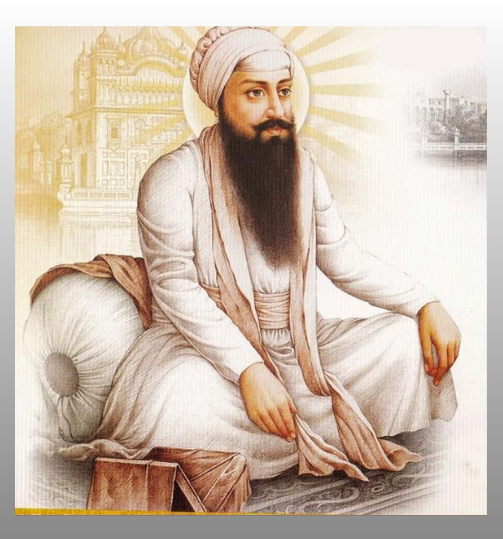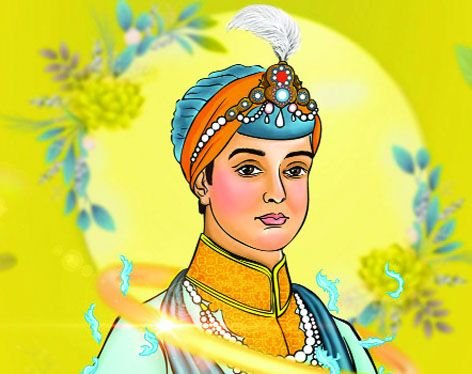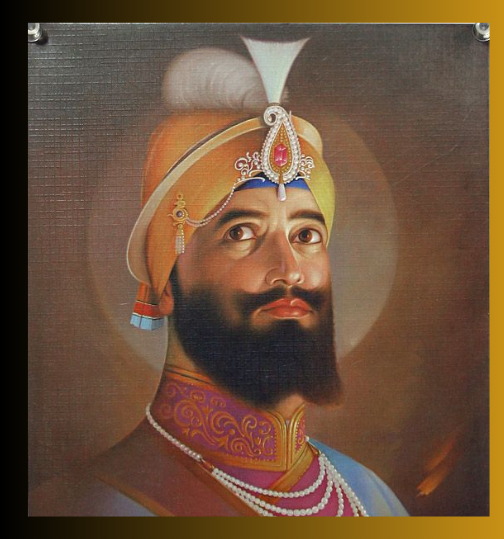Gurus
THE LEGENDARY GURUS

Guru Nanak Dev Ji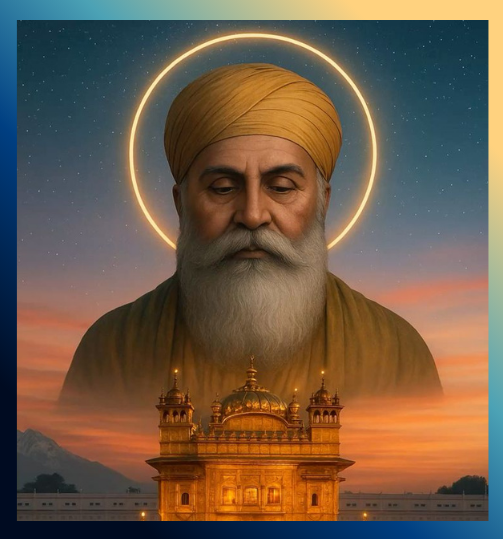
(Gurmukhi: ਗੁਰੂ ਨਾਨਕ ਦੇਵ ਜੀ; 15 April 1469 – 22 September 1539) Guru Nanak Dev Ji was the founder of Sikhism and the first of the ten Sikh Gurus. Born in Talwandi (now Nankana Sahib, Pakistan), Guru Nanak’s spiritual journey began early. He rejected ritualistic practices, caste divisions, and religious intolerance, emphasizing the oneness of God, equality of all humans, and truthful living. His travels, known as “Udasis,” took him across Asia to spread his universal message of love, peace, and devotion. His teachings, recorded in the Guru Granth Sahib, form the foundation of Sikh philosophy. Guru Nanak passed the spiritual leadership to his disciple, Bhai Lehna, who became Guru Angad Dev Ji.
Guru Angad Dev Ji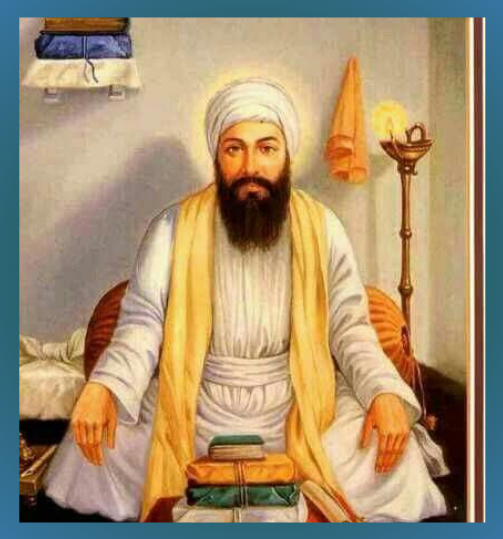
(31 March 1504 – 29 March 1552) Born as Bhai Lehna, Guru Angad Dev Ji became the second Sikh Guru in 1539. He developed and standardized the Gurmukhi script, which became the medium for writing Sikh scriptures. He focused on education, physical health, and spreading Guru Nanak’s teachings. Guru Angad Dev Ji established new centers of Sikh learning and continued the tradition of Langar (community kitchen). His humility and devotion made him a model of Sikh conduct. He passed the Guruship to Guru Amar Das Ji.
Guru Amar Das Ji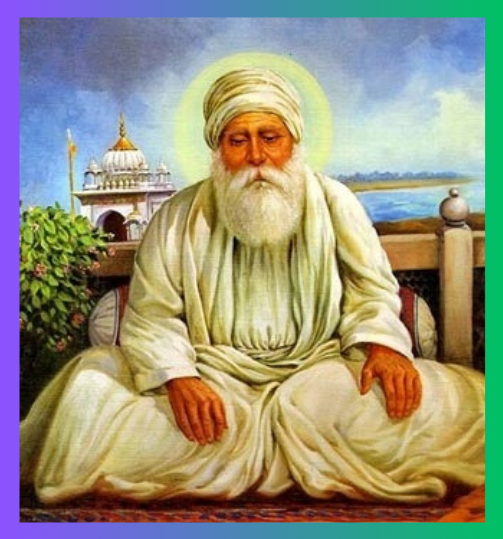
(5 May 1479 – 1 September 1574) Guru Amar Das Ji, the third Guru of the Sikhs, was appointed Guru at the age of 73. He institutionalized many Sikh practices such as the Langar and introduced new traditions like “Pehle Pangat, Phir Sangat” – everyone must dine together before participating in spiritual congregation, promoting equality. He also compiled hymns of previous Gurus and expanded the Sikh community by appointing missionaries and establishing 22 preaching centers. Guru Amar Das Ji nominated his son-in-law, Guru Ram Das Ji, as his successor.
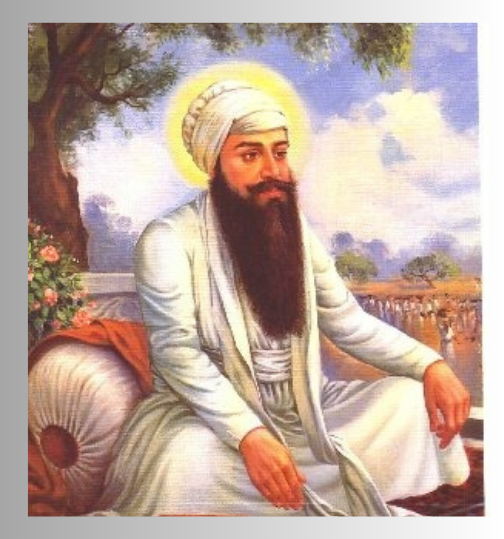 Guru Ram Das Ji
Guru Ram Das Ji
(24 September 1534 – 1 September 1581) The fourth Sikh Guru, Guru Ram Das Ji, was known for his humility and service. He founded the holy city of Amritsar and began the construction of the Sarovar (sacred tank), which later housed the Harmandir Sahib (Golden Temple). He emphasized family life, honest work, and devotion. Guru Ram Das Ji composed many hymns that were later included in the Guru Granth Sahib. He appointed his youngest son, Guru Arjan Dev Ji, as the next Guru.
Guru Arjan Dev Ji
(15 April 1563 – 30 May 1606) Guru Arjan Dev Ji, the fifth Guru, compiled the Adi Granth – the first version of the Guru Granth Sahib, including hymns of previous Gurus and saints from various backgrounds. He completed the construction of Harmandir Sahib, symbolizing universal brotherhood and spiritual center of Sikhism. His leadership brought organizational strength to the Sikh community. Guru Arjan was martyred under the Mughal Emperor Jahangir, becoming the first Sikh martyr. His death marks a turning point in Sikh history, initiating the community’s struggle against oppression.
Guru Hargobind Ji
(19 June 1595 – 3 March 1644) The sixth Guru, Guru Hargobind Ji, introduced the concept of Miri-Piri, symbolizing the balance of spiritual and temporal authority. He donned two swords representing this dual responsibility and transformed the Sikh community into a self-defending spiritual force. He built the Akal Takht (Throne of the Timeless One) as the seat of Sikh political power. Guru Hargobind led the Sikhs through several battles against Mughal forces but maintained spiritual teachings of peace and justice. His leadership marked a new era of assertive Sikh identity.
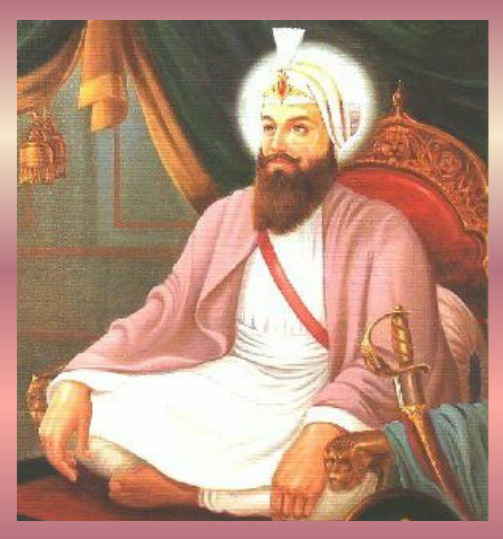
Guru Har Rai Ji
(16 January 1630 – 6 October 1661) The seventh Sikh Guru, Guru Har Rai Ji, succeeded his grandfather Guru Hargobind Ji in 1644. Though he maintained the military structure established by his predecessor, he is best remembered for his compassion and service. He promoted herbal medicine and established dispensaries for healing. Guru Har Rai Ji provided spiritual guidance during a time of political tension between Mughal princes Dara Shikoh and Aurangzeb, offering aid to the former. Despite being summoned by Aurangzeb, Guru Har Rai Ji avoided direct conflict. He appointed his younger son, Guru Har Krishan Ji, as his successor.
Guru Har Krishan Ji
(7 July 1656 – 30 March 1664) Guru Har Krishan Ji, the eighth Guru, became Guru at the age of just five and is revered for his humility and healing presence. He served the people of Delhi during a devastating smallpox epidemic, offering aid and comfort to the suffering regardless of caste or religion. He became known as “Bala Pir” (Child Prophet). He passed away at the age of eight after contracting the disease himself. Before his death, he indicated his successor with the words “Baba Bakale,” pointing to Guru Tegh Bahadur Ji.
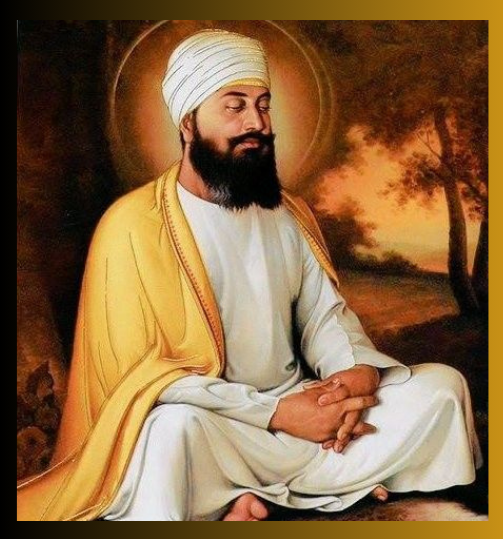
Guru Tegh Bahadur Ji
(1 April 1621 – 24 November 1675) Guru Tegh Bahadur Ji, the ninth Guru, was known for his deep meditation, spiritual teachings, and poetry, much of which is included in the Guru Granth Sahib. He defended religious freedom and stood against forced conversions under Emperor Aurangzeb. When Kashmiri Pandits appealed for help, Guru Tegh Bahadur stood as their protector, ultimately sacrificing his life in Delhi to uphold the right to practice one’s faith. His martyrdom is a seminal moment in Sikh history, earning him the title “Hind di Chadar” (Shield of India).
Guru Gobind Singh Ji
(22 December 1666 – 7 October 1708) Guru Gobind Singh Ji, the tenth and final human Guru, transformed the Sikh community into the Khalsa – a collective of saint-soldiers bound by discipline, courage, and devotion. He initiated the first five Sikhs, the Panj Pyare, and gave them Amrit (sacred nectar) on Vaisakhi 1699. He established the five articles of faith (the 5 Ks) and gave Sikhs a unique identity. Guru Gobind Singh Ji also declared the Guru Granth Sahib as the eternal Guru of the Sikhs before passing away in 1708. His leadership solidified Sikhism as a distinct, sovereign faith.


